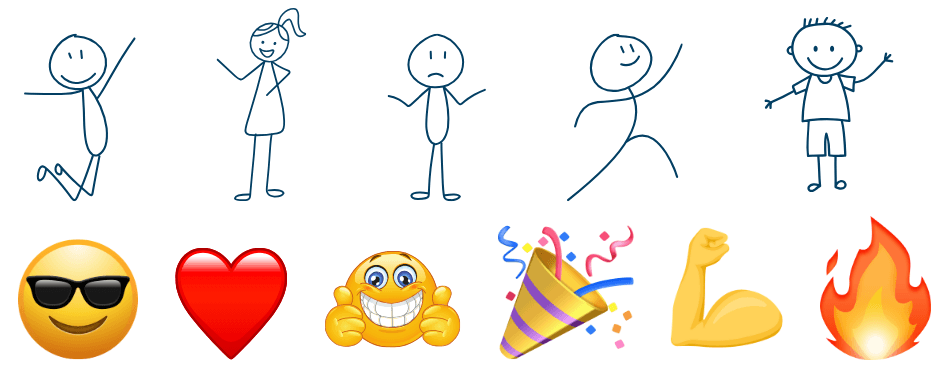Doodle Your Way to Brilliance: Adding Symbols & Images to Mind Maps
Unlock Your Brain’s Superpower with Simple Sketches!

Ever feel like your notes are just a wall of words? Or that you write things down but struggle to remember them later?
There’s a science-backed secret to better thinking, learning, and remembering—and it’s not just more words. It’s symbols and images!
Adding doodles, sketches, and symbols to your hand-drawn Mind Maps turns them into memory-boosting powerhouses. Instead of just writing down information, you visualise it, making it stick in your brain like glue.
The best part? You don’t need to be an artist! Even the simplest scribbles and icons can transform the way you think, learn, and remember.
Ready to supercharge your Mind Maps? Let’s dive into how you can use images and symbols to make your maps clearer, more engaging, and far more memorable.
Step 1: Start with a Strong Central Image 🎨

Why?
Your central image is the anchor for your Mind Map—it gives your brain an instant visual hook to recall what the map is about.
How to do it:
✅ Make it big, bold, and colourful—this is what grabs your brain’s attention first!
✅ Use an image, not words—a Mind Map always starts with a visual, not a written title.
✅ Keep it simple—stick figures, icons, or even quick sketches work!
Example: If you’re Mind Mapping "Time Management," draw a big clock in the centre instead of just writing the words "Time Management."
🚫 Mistake to avoid: Writing a title in the centre instead of drawing an image—words alone don’t create the same mental impact.
Step 2: Replace Words with Symbols & Icons 🔥

Why?
Symbols act as instant memory triggers—your brain processes visuals approximately 600 times faster than words.
How to do it:
✅ Swap out words for simple symbols—a 🔑 for "Key Ideas", a 💡 for "Inspiration", a 🏆 for "Goals".
✅ Use arrows to show connections between ideas instead of writing "relates to."
✅ Invent your own symbols—you’ll remember them better if they come from your own imagination!
🚫 Mistake to avoid: Writing too much—Mind Maps should be 80% visual, 20% text!
Step 3: Doodle Key Concepts for Better Recall ✍️

Why?
Doodling while learning has been proven to boost memory and focus—it keeps your brain engaged and helps you retain information.
How to do it:
✅ Draw a tiny doodle next to every keyword or idea—even a stick figure or rough shape works!
✅ Use different colours for different themes—green for growth ideas, red for urgent tasks, blue for learning concepts.
✅ Don’t overthink it! The goal isn’t perfect art; it’s visual memory hooks.
Example: If you’re mapping out a book summary, draw a magnifying glass 🔍 for key themes, a speech bubble 💬 for character dialogue, and a mountain ⛰ for challenges faced.
🚫 Mistake to avoid: Thinking "I can’t draw" and sticking to text—everyone can doodle!
Step 4: Use Colour to Boost Memory 🌈

Why?
Colour makes Mind Maps more engaging and easier to recall—it helps your brain categorise information quickly.
How to do it:
✅ Use different colours for different branches to organise ideas visually.
✅ Highlight key points in a standout colour (e.g., red for action items, green for creative ideas).
✅ Colour-code themes—all financial info in blue, all health topics in yellow, etc.
Example: If you’re planning a project, use blue for deadlines, red for urgent tasks, and green for creative ideas.
🚫 Mistake to avoid: Using only one colour—monochrome maps are harder to scan and recall!
Step 5: Create a Personal Symbol Library 📚

Why?
The more you use and repeat your own symbols, the faster your brain recognises them—turning them into shortcuts for thinking!
How to do it:
✅ Start a simple "symbol dictionary" in your notebook with 10-15 icons you use often.
✅ Use the same symbols repeatedly—a star ⭐ for priorities, a clock ⏰ for time-sensitive tasks, a book 📖 for learning.
✅ Challenge yourself to create new symbols for abstract concepts (e.g., a target 🎯 for "focus" or a tornado 🌪 for "chaos").
🚫 Mistake to avoid: Overcomplicating symbols—keep them quick, simple, and memorable!
Bonus Tip: Make Mind Mapping a Habit!

Why?
The more you use visual thinking daily, the easier and more natural it becomes.
How to do it:
✅ Doodle your daily to-do lists in a quick Mind Map format.
✅ Summarise meetings, books, or brainstorming sessions using symbols instead of written notes.
✅ Turn goal setting into a Mind Map with icons for each milestone.
🚫 Mistake to avoid: Only using Mind Maps for "serious" work—they work for personal growth, hobbies, and planning too!
Final Thoughts: Why Symbols & Doodles Supercharge Your Mind Maps
✔️ They make information more engaging and easier to recall.
✔️ They simplify complex ideas into visual shortcuts.
✔️ They spark creativity and deeper thinking.
So, are you ready to ditch boring note-taking and start using images and symbols to make your Mind Maps more powerful?
Join the Million Mind Map Community and Get Started Today!
📢 Want expert guidance?
🎉 Join The Million Mind Map Newsletter today to transform the way you think and be the first to hear the latest from Mind Mapping Expert HQ.
🔥 Click here to get started—unlock your brain’s full potential today! 🚀

Categories

THE PROJECT
(2)

MIND MAPPING
(2)

JOIN IN
(2)

Latest Posts

About me

Hi there 👋 My name is Elaine Colliar, 5 Times World Mind Mapping Champion and your Mentor in Mind Mapping!

Ready to Think Smarter? Join Our Free Mind Mapping Community!
Learn directly from TWO World Champions in Mind Mapping, get exclusive resources, and connect with like-minded thinkers who are transforming their productivity, careers, and creativity.

Get Smarter, One Weekly Idea at a Time
We simplify all our Mind Mapping news for you. Get the week's best insights, tips and news—all curated and delivered in one weekly digest. Organise your thinking, unlock creativity, and achieve more with less effort.



